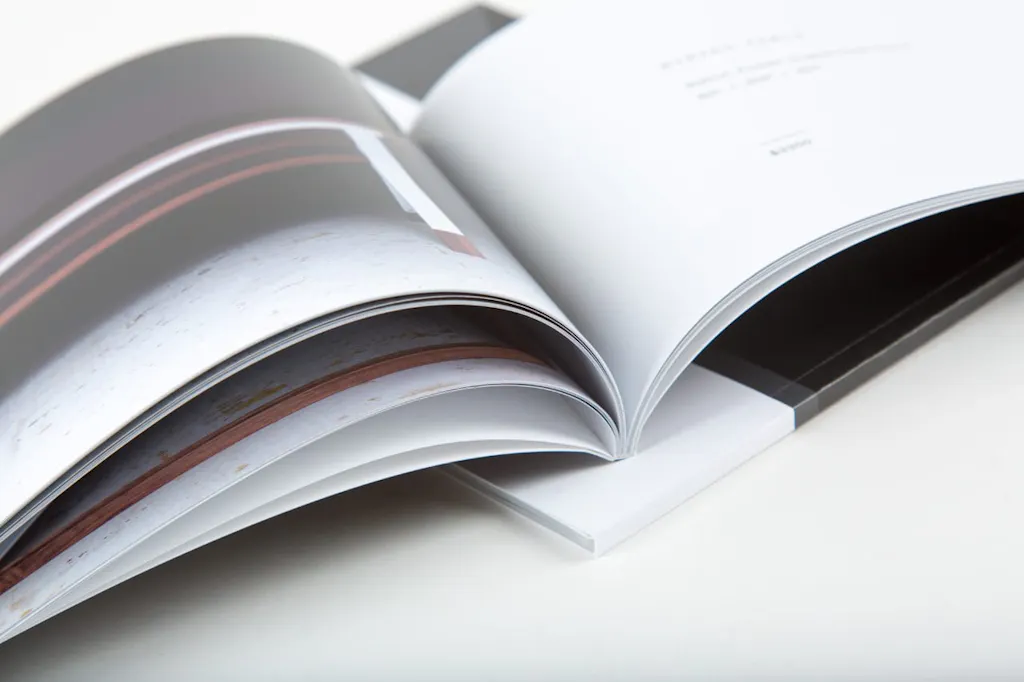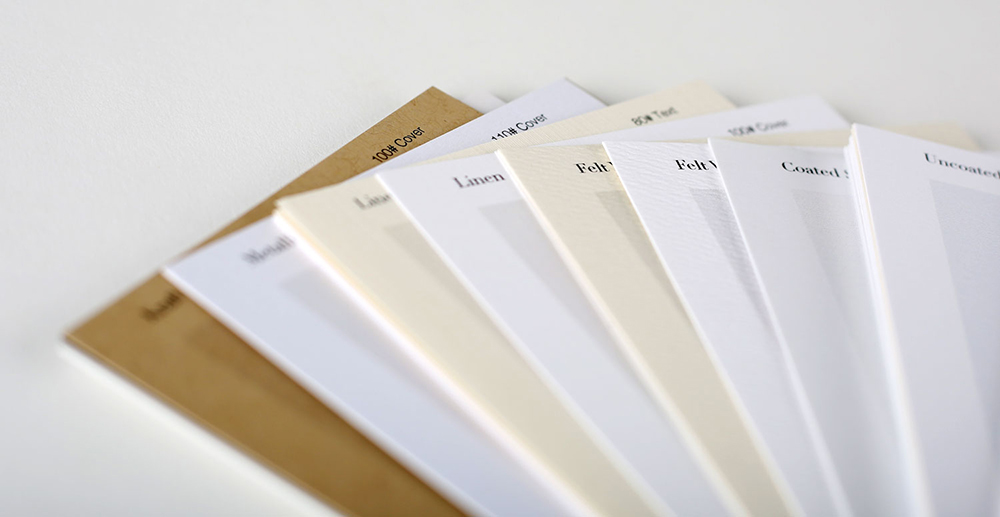Text Weight vs. Cover Weight

Understanding the Difference Between Text Weight and Cover Weight Paper
Choosing the right paper weight for your online printing project can be crucial. Measured in pounds or grams per square meter (GSM), text weight and cover weight can affect the look and feel of marketing materials, personal invitations and projects of all kinds. We’ll go over how to choose between text weight and cover weight paper and discuss key differences in paper thickness, flexibility and common uses.
Smartpress Tip: The pound refers to how much a ream of paper weighs. (You can even reference this free downloadable paper weight conversion chart or view it below to determine different weight equivalents.)

Take a look at the differences between these stock weights before you upload your print-ready file and place your order.
What is Text Weight Paper?
Text weight paper refers to paper that’s thin, flexible and lightweight. You may think of standard office printer paper or a book or magazine’s interior pages. Sometimes called book, bond, writing, ledger or offset paper, text weight paper can be coated or uncoated.
Text Weight Paper Features
- Lightweight
- Easily rolled and folded
- The larger the number, the heavier the stock
Common Uses for Text Weight Paper
- Smartpress offers the following text paper weights:
- 70#, 80# and 100#
- Commonly used for:
- Interior pages of custom booklets, magazines and calendars
- Letterheads
- Newsletters
- Flyers and handouts
Smartpress Tip: Take advantage of our online printing services and add features like coating and die cutting.
What is Cover Weight Paper?
Cover weight paper refers to paper that’s thicker and sturdier than text weight paper. At its heaviest, cover stock weight can be similar to the material used to make cereal boxes. Sometimes referred to as cardstock, bristol, index or tag paper, cover stock paper weights can be both coated or uncoated.
Cover Weight Paper Features
- Heavier and more rigid than text weight paper
- Must be scored before it can be folded
- Usually smooth, but can have a texture depending on the stock
- Can have a glossy or matte finish
Common Uses for Cover Weight Paper
- Smartpress offers the following cover paper weights:
- 80#, 100#, 120# and 150#
- Commonly used for:
- Postcards
- Business Cards
- Playing cards and tarot cards
- Invitations
- Booklet, program, catalog and presentation covers
- Greeting Cards
- Scrapbooking
- Table Tents
- Door Hangers
Smartpress Tip: Add Soft Touch laminate for protection and a soft, velvety feel that’s unforgettable.
What are Point Weights in Paper? How Thickness Affects Print Materials
As you design your project for an online printer, you may come across point weights, too. Point weights refer to the thickness of the stock (usually indicated as 10 pt., 12 pt., etc.). It’s important to note the larger the point weight, the heavier the paper stock will be.
For example:
- 10 pt. weight is considered relatively lightweight
- 12 pt. weight exhibits more stiffness
- 14 pt.- 24 pt. weight stocks have a noticeable heft and stiffness
Paper Weight Summary Table
| Description | Weight Type | Recommended Weight | |
| Text Weight Paper | Lightweight, flexible paper used for interiors of booklets, flyers, newsletters, etc. | Pounds (#) | 70#, 80#, 100# |
| Cover Weight Paper | Heavier, rigid paper used for covers, cards, invitations, etc. | Pounds (#) | 80#, 100#, 120#, 150# |
| Point Weight Paper | Measures paper thickness. Larger pt. = thicker, more rigid. | Points (pt.) | 10 pt., 12 pt., 14–24 pt. |
If you have questions about using text weight vs. cover weight paper for any of your Smartpress projects, please feel free to contact customer service.
